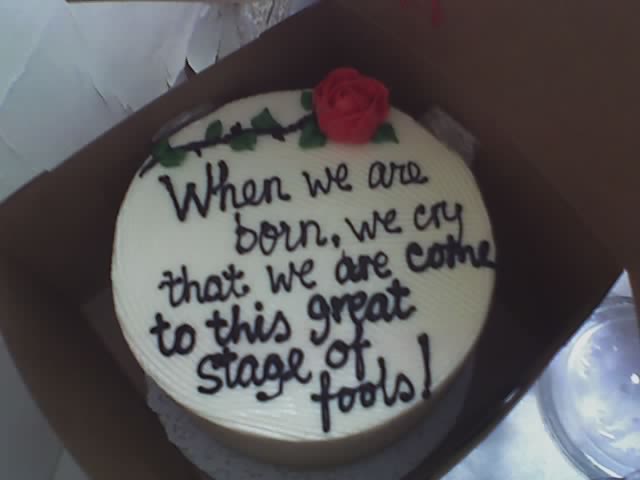Cleopatra’s Facebook
Wednesday, April 17th, 2013Last night, PBS and the Folger Shakespeare Library hosted a Twitter party, a real-time online conversation about teaching Shakespeare with experts from the Folger and teachers from across the country. It was a great opportunity to connect with like-minded educators and share innovative practices, although, because it was on Twitter, the party was most definitely BYOB.
I had the opportunity to share a cool project I did two years ago, and I realized that I never actually posted the final product here. Long-time readers may remember my working with a class of sixth-grade students on Antony and Cleopatra back in the spring of 2011. The students were learning about ancient Egypt in social studies, and it was a good opportunity to make connections in ELA. We did in-class readings of selected scenes and discussed how they relate to our lives and world today.
One thing that made this project a little different was that we used an online Moodle classroom to manage our unit. This school happened to be part of two unrelated projects, one that gave the students laptops in school and another that gave them desktops at home, so it was a perfect environment to experiment with blended learning models for teaching Shakespeare. I uploaded links to the scenes and additional resources we could draw from to increase our understanding, as well as message boards for each lesson, so students could continue discussing the themes of the lesson beyond the school day.
Once we finished the play, we discussed our project. My thinking was that we would make a video. The kids thought the play was like a soap opera (and that Cleopatra was a “drama queen”!) and that seemed to be a promising thread for a while. But the more we talked about the project, the more the kids wanted to go another way. They decided that they wanted to retell the story of Antony and Cleopatra through social media, which later got refined into the idea of creating Cleopatra’s Facebook page during the events of the play. The students were too young to actually go on Facebook, so our project would be an offline mock-up.
I set up an area on the Moodle classroom where students could brainstorm ideas as well as post their favorite lines from the play. We broke up into five groups, and each was assigned a different act. Each group also designed a tableau to represent their act. Actors volunteered, and were chosen to select their preferred part by random lot. We found various locations around the school to take pictures of our tableaux and Facebook profile headshots. Our costume scheme was simple: “Romans are Red, Egyptians are Blue, Cleopatra wears White, and the snake does too.” The snake, by the way, was a real snake generously lent by the science teacher, though it made our Cleopatra skittish. The actor who played the clown had the idea that he would photobomb the earlier pictures, and then appear completely serious in the final image.
Meanwhile, other students were taking the ideas posted to the Moodle classroom by each of the groups and creating a Facebook-style narrative tracing the plot of the play. A particularly tech-savvy student volunteered to put it all together in the visual style of Facebook, which she did on her own. The final product can be seen below (click for a larger image).
Enjoy!


